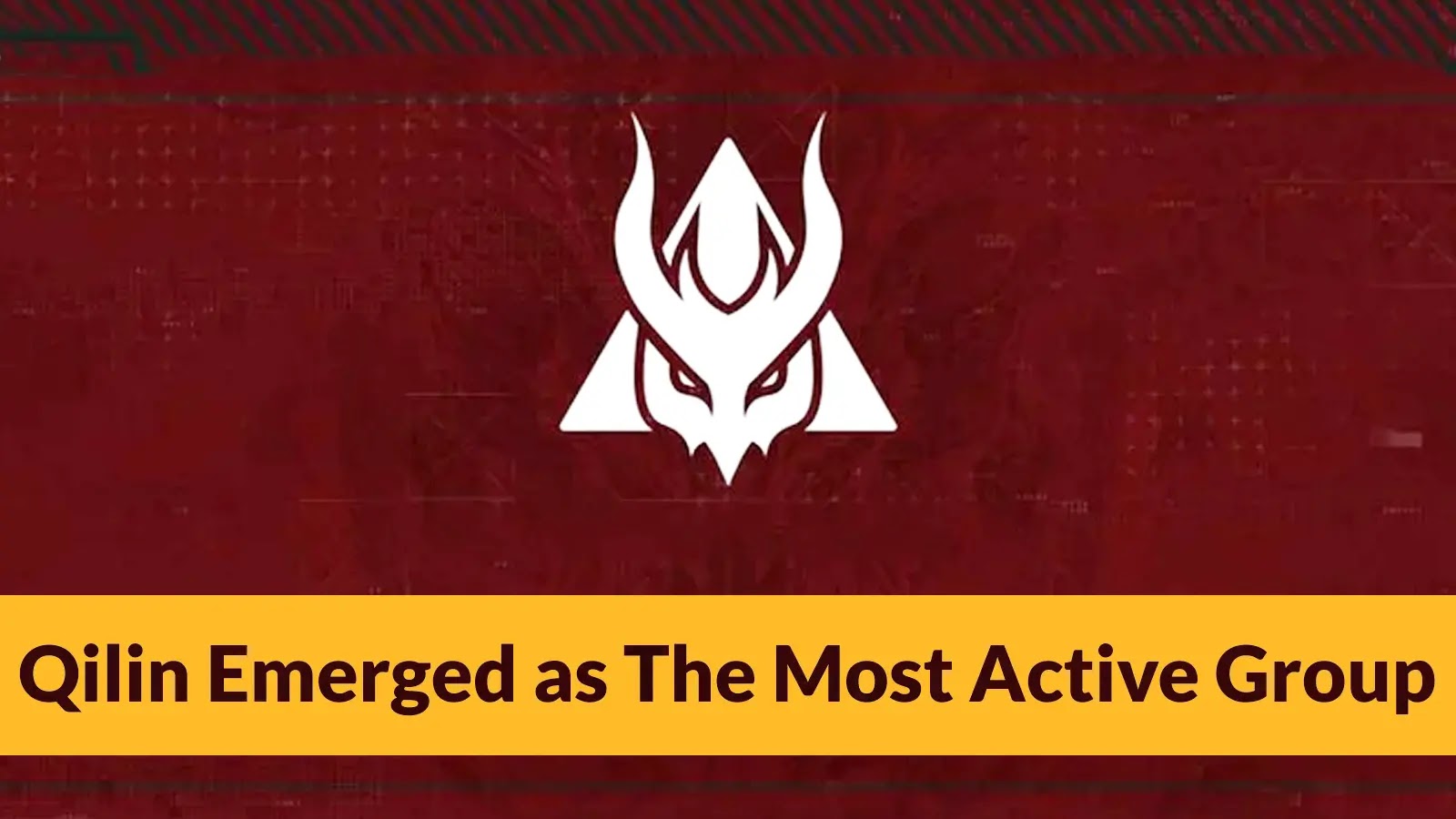
Qilin Emerged as The Most Active Group, Exploiting Unpatched Fortinet Vulnerabilities
Qilin Surges: Unpacking the Rise of Ransomware’s New Apex Predator and Fortinet’s Unpatched Peril
The digital threat landscape is in a perpetual state of flux, and June 2025 marked a significant, unsettling shift. The Qilin ransomware group, a name increasingly whispered with dread in cybersecurity circles, didn’t just grow; it exploded onto the scene, seizing the unfortunate distinction of the most active ransomware operation. With a staggering 47.3% surge in activity compared to preceding months, Qilin accounted for 81 victims in a single month. This Ransomware-as-a-Service (RaaS) syndicate, having amassed over 310 victims since its emergence, presents a sophisticated and urgent threat, particularly through its audacious exploitation of unpatched Fortinet vulnerabilities.
Qilin’s Ascendancy: A Deep Dive into Their Modus Operandi
Qilin’s meteoric rise is not merely a statistical anomaly; it reflects a calculated and highly effective operational model. Their RaaS framework empowers affiliates with potent tools, infrastructure, and negotiation support, allowing them to focus on initial access and network compromise. This distributed yet coordinated approach grants them significant scalability and resilience. Unlike some groups that rely on broad phishing campaigns, Qilin has demonstrated a particular aptitude for exploiting exposed, vulnerable systems, drastically reducing the effort required for initial breach.
Their sophistication extends beyond initial access. Qilin’s post-exploitation tactics involve meticulous network reconnaissance, lateral movement, data exfiltration, and ultimately, encryption of critical systems. The ransom demands are often tailored to the victim’s perceived ability to pay, maximizing their ill-gotten gains. Their negotiation teams are reportedly shrewd and persistent, adding psychological pressure to the technical devastation.
The Fortinet Vulnerability Angle: A Critical Exploitation Vector
A significant factor in Qilin’s recent surge is their documented exploitation of unpatched vulnerabilities within Fortinet products. While specific CVEs were not detailed in the source, it’s a common tactic for ransomware groups to target widely deployed network devices and security solutions due to their critical position within organizational networks and their frequent exposure to the internet. Fortinet products, including FortiGate firewalls, FortiClient, and FortiManager, are prevalent in enterprises globally, making them high-value targets.
Historical examples of high-severity Fortinet vulnerabilities that have seen active exploitation include:
- CVE-2023-27997: A critical heap-based buffer overflow in FortiGate SSL-VPN that could lead to remote code execution.
- CVE-2022-42475: An out-of-bounds write vulnerability in FortiOS SSL-VPN, also leading to remote code execution.
- CVE-2023-34992: A command injection vulnerability in FortiNAC.
These examples underscore the critical importance of timely patching, especially for internet-facing security appliances. Attackers like Qilin actively scan for and exploit known, unpatched vulnerabilities within hours or days of their public disclosure.
Remediation Actions: Fortifying Defenses Against Qilin and Similar Threats
In the face of an aggressive and evolving threat like Qilin, proactive and comprehensive cybersecurity measures are paramount. Organizations must prioritize robust vulnerability management and incident response capabilities.
- Patch Management is Non-Negotiable: Immediately apply all security patches and firmware updates for all software and hardware, especially internet-facing devices like firewalls, VPNs, and email servers. Automate this process where feasible, but ensure manual verification for critical systems.
- Implement Strong Network Segmentation: Isolate critical assets and sensitive data on separate network segments. This limits lateral movement even if an attacker gains initial access.
- Enable Multi-Factor Authentication (MFA): Mandate MFA for all remote access, privileged accounts, and critical systems. This is one of the most effective controls against credential theft.
- Regular Backups with Offline Storage: Conduct frequent, verified backups of all critical data. Crucially, store these backups offline or on immutable storage to prevent them from being encrypted by ransomware.
- Principle of Least Privilege: Grant users and systems only the minimum necessary permissions to perform their functions.
- Endpoint Detection and Response (EDR)/Extended Detection and Response (XDR): Deploy and properly configure EDR/XDR solutions across all endpoints to detect and respond to suspicious activities in real-time.
- Security Awareness Training: Educate employees about phishing, social engineering, and safe computing practices. A well-informed workforce is your first line of defense.
- Incident Response Plan: Develop, test, and regularly update a comprehensive incident response plan. This plan should detail steps for detection, containment, eradication, recovery, and post-incident analysis.
- Monitor Fortinet and Other Security Vendor Advisories: Stay vigilant for new vulnerability disclosures and threat intelligence from your security vendors.
Tools for Detection, Scanning, and Mitigation
| Tool Name | Purpose | Link |
|---|---|---|
| Nessus (Tenable) | Vulnerability scanning and assessment to identify unpatched systems. | https://www.tenable.com/products/nessus |
| OpenVAS (Greenbone Security Manager) | Open-source vulnerability scanner to detect known CVEs. | https://www.greenbone.net/ |
| FortiAnalyzer | Centralized logging and reporting for Fortinet devices, crucial for anomaly detection. | https://www.fortinet.com/products/security-analytics/fortianalyzer |
| Microsoft Defender for Endpoint (MDE) | EDR capabilities for detecting and responding to post-exploitation activities. | https://www.microsoft.com/en-us/security/business/threat-protection/microsoft-defender-for-endpoint |
| CrowdStrike Falcon Insight | Leading EDR/XDR platform for advanced threat detection and response. | https://www.crowdstrike.com/products/endpoint-security/falcon-insight-xdr/ |
The Unrelenting Ransomware Battle: Key Takeaways
The rise of the Qilin ransomware group serves as a stark reminder of the dynamic and persistent nature of cyber threats. Their emergence as the most active group, coupled with their focus on exploiting unpatched Fortinet vulnerabilities, highlights two critical truths: the RaaS model continues to democratize and scale cybercrime, and the fundamental principle of timely patching remains an organization’s most potent defense. Protecting your digital assets requires continuous vigilance, investment in robust security controls, and a proactive approach to vulnerability management. Organizations that fail to adhere to these principles risk becoming the next entry in Qilin’s victim count.





